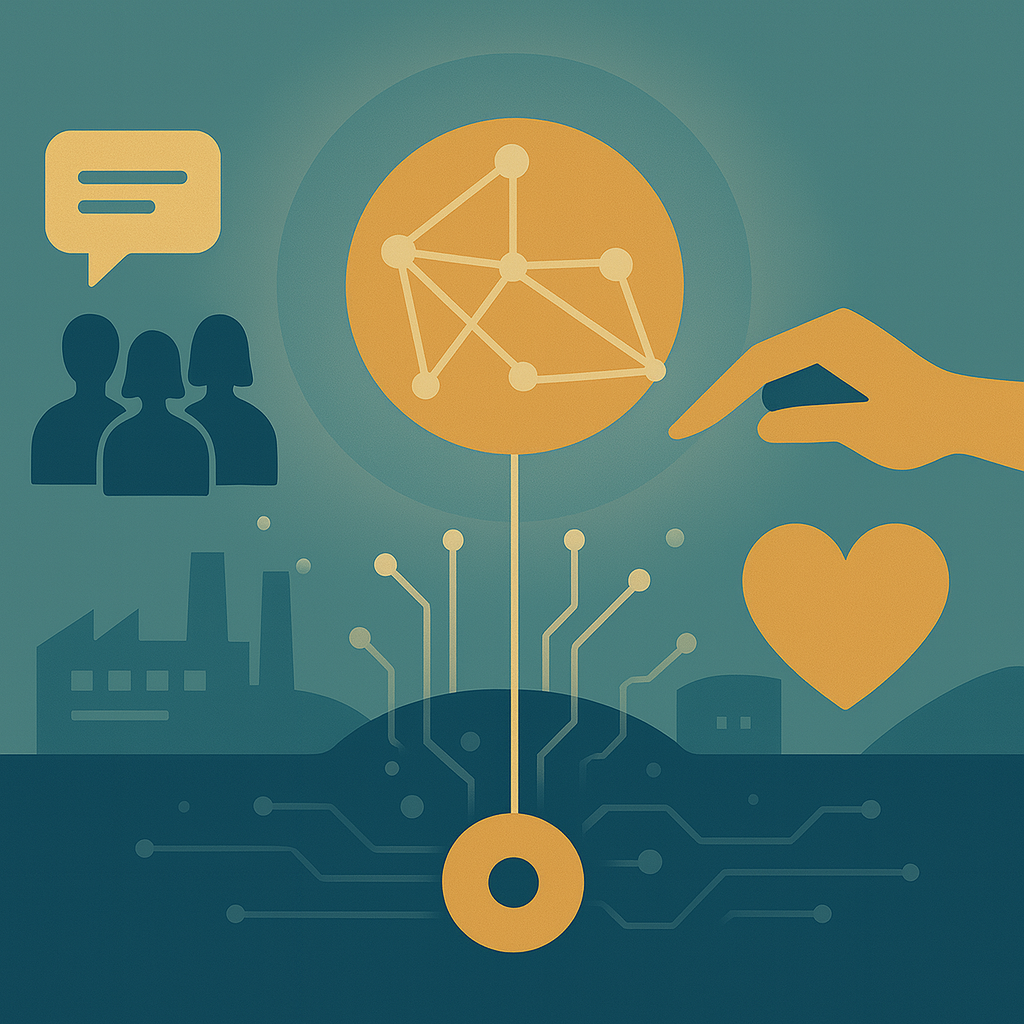|
Chapter 5: Social Capital
 Social capital refers
to the value created by relationships—trust, norms of reciprocity,
and networks that enable people to coordinate and act together.
Scholars such as Pierre Bourdieu, James Coleman, and Robert Putnam
helped shape this concept. In everyday life, social capital shows up
as reliability within teams, cooperation among neighbors, reputation
with partners, and the ability to mobilize help when it matters. Social capital refers
to the value created by relationships—trust, norms of reciprocity,
and networks that enable people to coordinate and act together.
Scholars such as Pierre Bourdieu, James Coleman, and Robert Putnam
helped shape this concept. In everyday life, social capital shows up
as reliability within teams, cooperation among neighbors, reputation
with partners, and the ability to mobilize help when it matters.
What social
capital includes
•
Internal trust and cohesion:
reliability, mutual help, and shared norms inside families, teams,
and organizations.
•
External reputation and
ties: credibility with customers, suppliers, communities,
and institutions.
•
Network structure:
bonding ties (close, strong ties), bridging ties (connections across
groups), and linking ties (connections across levels of power and
authority).
•
Civic habits:
volunteering, association membership, and participation that build
reciprocity over time.
How social
capital works
Social capital
reduces friction and spreads useful information. It lowers the cost
of coordination, speeds problem-solving, and helps communities and
organizations act in sync. When trust is high, people share
knowledge more freely, take wise risks, and recover faster from
setbacks. When trust is low, projects stall—even with ample money
and technology.
What social
capital is not
It is not mere
popularity or a raw count of followers. It is not marketing spin. It
is not nepotism or favoritism. Genuine social capital is earned
through consistent behavior, reliability, and fairness—and it
benefits more than a narrow clique.
Principles
for building and stewarding social capital
• Show up and keep
promises: consistency builds credibility.
• Practice reciprocity:
give before you need; repay help openly.
• Bridge, don’t just bond:
maintain ties beyond your immediate circle to access new ideas and
resources.
•
Be transparent and fair:
openness strengthens trust, even when decisions are difficult.
• Resolve conflicts well:
timely, respectful resolution prevents network decay.
• Include others:
inclusive practices broaden opportunity and resilience.
Everyday
examples (brief)
• A family
bakery partners with local farms and schools; dependable deliveries
and shared events turn customers into advocates.
• A clinic hosts caregiver groups, strengthening mutual support and
improving follow-through on care plans.
• A city co-designs programs with neighborhood associations and
faith communities, which speeds adoption and reduces resistance.
Common
confusions (clarified)
•
Bonding vs. bridging:
bonding ties create reliability within groups; bridging ties connect
across groups and prevent insularity—both matter.
• Trust vs. compliance:
rules can compel behavior, but trust enables initiative and learning
beyond the rulebook.
•
Reputation vs. brand:
reputation is earned through experience over time; a brand promise
without delivery weakens social capital.
• Social capital vs.
spiritual capital: social capital is about relationships
and networks; spiritual capital concerns purpose, values, and
meaning. They reinforce each other but are distinct.
Modern
extensions
•
Online + offline networks:
digital communities, messaging groups, and platform participation
now shape how trust forms. Healthy norms, moderation, and digital
etiquette matter.
•
Resilience and risk:
in crises, trusted networks coordinate resources quickly; bridging
ties connect to aid and information outside the usual circle.
• Misinformation and
polarization: low-quality information can erode trust;
transparent communication and credible intermediaries help protect
social capital.
The “dark
side” and safeguards
Strong
ties can become exclusionary, enable corruption, or resist needed
change. Safeguards include open membership practices,
accountability, ethical standards, and regular checks against
favoritism.
Interaction
with the other capitals
•
Social × Intellectual:
trusted networks spread ideas and skills faster, raising learning
and innovation.
•
Social × Material:
reliable supplier and community relationships reduce downtime and
supply risk.
•
Social × Spiritual:
shared purpose and ethical norms deepen trust and cooperation.
Conclusion
Social capital is the connective tissue of society and
organizations. It turns individual effort into coordinated
achievement and transforms resources and ideas into durable
progress. Cultivating trust, reciprocity, and bridging ties is
essential for well-being, performance, and development—core aims of
the 4Capital framework.
4Capital => life
satisfaction of individuals
4Capital =>
organizational performance
4Capital => country
development
Note: The work
presented here includes research conducted by Dr. Alex Liu at
Stanford University and that for the Global Entrepreneurship
Monitoring initiative. Dr. Alex Liu greatly benefited from valuable
discussions with several accomplished authors, including Danah
Zohar, author of 'Spiritual Capital'; Ernie Chu, author of 'Soul
Currency'; Theodore Roosevelt Malloch, author of 'Spiritual
Enterprise'; and Lawrence M. Miller, author of 'The New Capitalism'.
Note:
To cite us, please write "Liu, Alex. 4Capital and
Performance, RM Publishing, 2008, ResearchMethods.org,
https://www.researchmethods.org/4capital.htm.
|